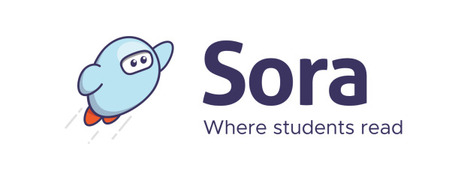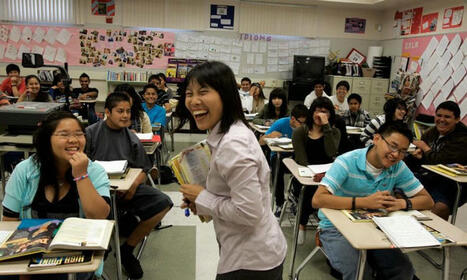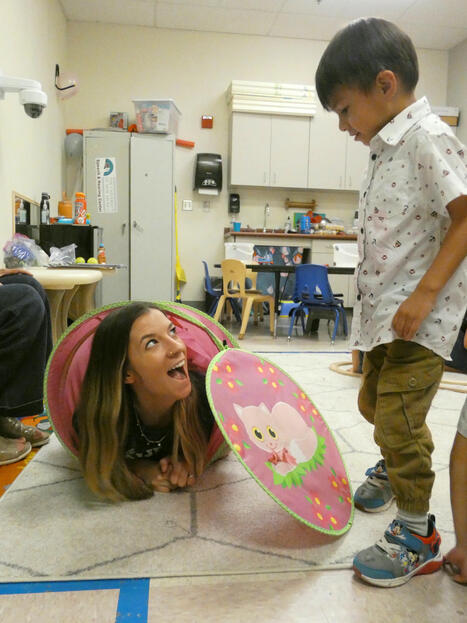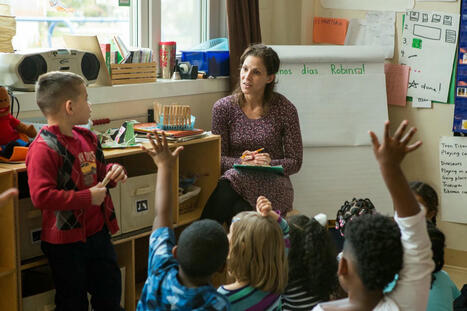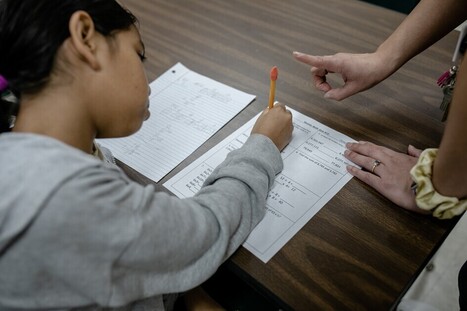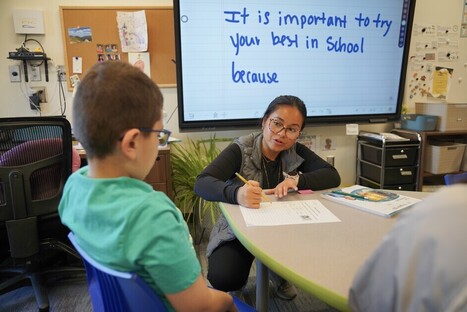 Your new post is loading...
The Trump administration has cut funding for some English learner PD grants, sparking confusion and prompting appeals.
States set guidance for schools working with English learners. That role is key now, experts say.
Join this free virtual event to get insights, strategies, and solutions to ensure equity and opportunity for English Learners.
Hawthorne: English learners do not come in standard sizes, and their learning cannot be boxed into tidy grade-level expectations.
Teaching English learners can be challenging. These veterans offer guidance.
Drawing on a longitudinal perspective and narrative inquiry, this study examines how a teacher/graduate student navigated her professional development…
RESEARCH: Dual Language Learners (DLLs)—young children with at least one parent who speaks a language other than English—make up one-third of all children ages 0–5 in the United States. This fact sheet series and related resources provide essential data on the number and characteristics of DLL children and their families nationwide and in the 30 states with the most DLLs.
When students enroll in school and in school-related services, they shouldn’t have to worry about whether their private information will be used against
Yuko Goto Butler’s latest book gathers research on language development and pedagogy among children learning a foreign language and presents it in a manner that bridges research and practice.
Leigh Knapp made collection development decisions focused on improving the reading skills of the refugee population at her Milwaukee elementary school and helping the students acclimate to their new surroundings.
For many families in New Mexico, finding early childhood healthcare in their native language isn’t just difficult—it’s often out of reach. This language gap can be especially critical when it comes to children with autism or developmental delays
Multilingualism is a gift to students, communities, and our country. The Trump Administration is trying to hinder it.
|
English learners are sometimes an afterthought in 'science of reading' policies. Some educators want to change that.
The Trump administration quietly rescinded 2015 guidance on English learners' federal rights.
Latest Posts Filter Posts Thoughtful AI Use in Literacy Instruction: Possibilities and Problems Catherine Gibbons | Sep 11, 2025 Share As literacy professionals, we are always looking for ways to bring authentic, meaningful learning experiences to our students.
The House Appropriations Committee is poised to approve massive cuts to critical language education programs in its Fiscal Year 2026 Labor HHS Education spending bill. It proposes to cut $12 billion from the Department of Education that would be partially paid fo
Lizdelia Piñón believes AI won’t replace bilingual educators, but it can empower them Bilingual educators often serve as a bridge for students navigating two worlds academically, linguistically,and culturally. But the demands placed on these educators continue to grow.Many are tasked with meeting rigorous academic standards, differentiating instruction for multiple language proficiency levels, and creating culturally relevant lessons, often without sufficient resources or support. In today’s rapidly evolving educational landscape, artificial intelligence (AI) is emerging as a powerful partner to meet these challenges. Serving a Growing Student Population In the US, over five million emergent bilingual students (also referred to as
The Senate Appropriations Committee has advanced the Fiscal Year 2026 (FY26) Labor, Health and Human Services, Education, and Related Agencies (Labor-HHS) appropriations bill. The bill, which includes funding for key education, workforce, and health programs, was approved by the committee with a 26-3 vote, and is now headed to the full Senate for consideration. The bill allocates roughly $200 billion—similar to the previous year's enacted funding, including $79 billion for the Department of Education, exceeding President Trump's proposal by $12.3 billion. It emphasizes support for programs like Title I-A, IDEA Part B, the Rural Education Achievement Program, Head Start, and
President Donald Trump has called for eliminating federal dollars set aside for English learners. Advocates make their case.
When I walked into International High School at Lafayette one afternoon, the halls were already buzzing. You could hear soft conversations in Arabic,
As the Science of Reading (SoR) gains traction across states, schools, and teacher preparation programs, a pressing question has emerged: How well does the SoR framework serve multilingual learners (MLs)? The Reading League (2021, para. 1) defines the SoR as “a vast, interdisciplinary body of scientifically-based research about reading and issues related to reading and writing,” drawing from fields such as cognitive psychology, linguistics, neuroscience, and education. Proponents champion its research-based foundations and its potential to improve reading outcomes through explicit, systematic instruction. For many educators, the SoR has provided much-needed clarity, structure, and a corrective to years of inconsistent
Teachers are embracing AI tools to translate texts, modify reading passages, and create engaging language acquisition activities for English learners. But federal funding cuts and other issues could complicate that work.
Multilingual learners are the fastest growing population of students in our country. If you think about the history and legacy of multilingual learners and young people who speak languages other than English in our schools and communities, they’ve always been here all along the way, and their numbers are exponentially growing. Multilingual learners and families are not a monolith, which means the levels of support that we provide have to be nuanced and personalized. We also have to think critically and deeply in terms of how to engage these students, and not just assume they’re “unable to do something” just
Survey data analysis found more mental health counselors at school can boost morale for English-as-a-second language teachers.
|




 Your new post is loading...
Your new post is loading...



